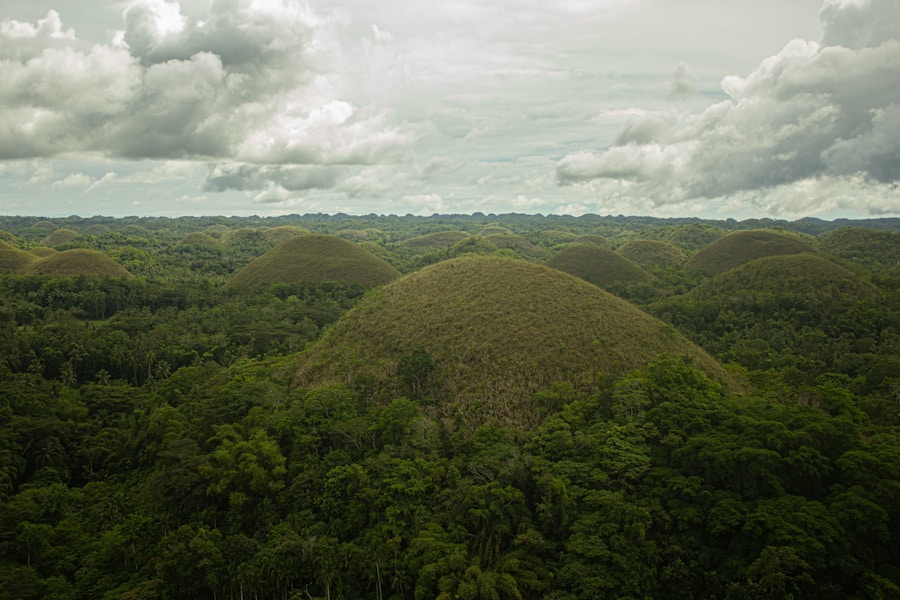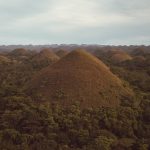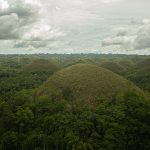The Mysterious Chocolate Hills of Bohol
Description
The Chocolate Hills, a geological wonder located in the Bohol province of the Philippines, have captivated the imagination of both locals and tourists alike. Their origin is a subject of scientific inquiry and folklore, with various theories attempting to explain how these unique formations came to be. The most widely accepted geological explanation posits that the hills were formed through a combination of limestone erosion and the uplift of coral deposits.
Millions of years ago, the area was submerged under a shallow sea, where marine organisms thrived and contributed to the accumulation of limestone. Over time, tectonic activity caused the land to rise, exposing these limestone deposits to the elements. As rainwater eroded the limestone, it carved out the distinctive conical shapes that we see today.
The process of erosion was further enhanced by the region’s tropical climate, characterized by heavy rainfall and dry seasons. During the dry months, the grass that covers the hills turns brown, giving them a chocolate-like appearance, which is how they got their name. This transformation is not just a visual spectacle; it also highlights the dynamic interplay between geological processes and climatic conditions that have shaped this landscape over millennia.
The Chocolate Hills stand as a testament to the Earth’s geological history, showcasing the intricate processes that have sculpted our planet.
Key Takeaways
- The Chocolate Hills are a unique geological formation located in the Bohol province of the Philippines.
- The hills are made up of at least 1,268 individual mounds that are covered in green grass that turns brown during the dry season, giving them the appearance of chocolate kisses.
- According to local legend, the hills were formed from the tears of a giant named Arogo who wept over the death of his mortal beloved.
- The Chocolate Hills are home to a diverse range of flora and fauna, including endemic species such as the Philippine tarsier and the Visayan warty pig.
- Conservation efforts are being made to protect the Chocolate Hills, including reforestation projects and the establishment of protected areas, to ensure the preservation of this natural wonder for future generations.
The Unique Geological Formation of the Hills
Uniformity in Shape and Size
The striking uniformity in shape and size of the hills is attributed to the underlying limestone bedrock, which has been shaped by natural forces over time. Each hill resembles a giant chocolate kiss or a conical mound, with the limestone composition playing a crucial role in their formation and maintenance.
The Process of Karstification
The process of karstification, where soluble rocks like limestone dissolve in water, has led to the creation of these conical shapes. Rainwater, slightly acidic due to dissolved carbon dioxide, seeps into cracks in the limestone, gradually eroding it away. This slow but relentless process has resulted in the smooth contours and distinct shapes of the Chocolate Hills.
Geological Diversity of the Surrounding Landscape
The surrounding landscape is dotted with other geological features such as caves and sinkholes, further emphasizing the area’s rich geological diversity.
The Legend Behind the Chocolate Hills

Beyond their geological significance, the Chocolate Hills are steeped in local folklore and legend, adding a layer of cultural richness to their allure. One popular legend tells the story of two giants who engaged in a fierce battle over a beautiful maiden. As they fought, they hurled boulders at each other, creating chaos across the landscape.
Eventually, realizing that their conflict was futile, they decided to bury their differences and became friends. In their newfound camaraderie, they wept tears of joy that turned into hills when they fell to the ground. This tale not only explains the hills’ origin but also reflects themes of reconciliation and friendship. Another legend speaks of a giant named Arogo who fell in love with a mortal woman named Aloya.
When Aloya passed away, Arogo was heartbroken and wept for days on end. His tears formed the hills as a tribute to his lost love. This narrative resonates deeply with local communities, as it embodies emotions that transcend time and culture—love, loss, and remembrance.
Such legends contribute to the cultural identity of Bohol and serve as a means for locals to connect with their natural environment. They transform the Chocolate Hills from mere geological formations into symbols of love and friendship that enrich the local heritage.
The Biodiversity of the Chocolate Hills
| Aspect | Metrics |
|---|---|
| Number of Species | Over 1,200 plant species, including 273 trees, 629 herbs, 135 ferns, 106 grasses, and 103 species of orchids |
| Endemic Species | At least 100 species of plants are endemic to the Chocolate Hills |
| Animal Species | Over 100 bird species, including the endangered Philippine Eagle, and various mammals, reptiles, and amphibians |
| Conservation Status | The Chocolate Hills are a protected area and a proposed UNESCO World Heritage Site |
The Chocolate Hills are not only an impressive geological formation but also a vital ecosystem teeming with biodiversity. The area surrounding these hills is home to various flora and fauna that thrive in this unique environment. The hills are primarily covered with grasslands, which provide habitat for numerous species of birds and small mammals.
Among these are endemic species such as the Philippine tarsier, one of the world’s smallest primates known for its large eyes and nocturnal habits. The presence of such unique wildlife highlights the ecological importance of this region. In addition to animal life, the vegetation around the Chocolate Hills includes various grasses and shrubs that adapt well to the region’s climatic conditions.
During the dry season, these plants turn brown, creating a stark contrast against the vibrant green landscape during the rainy months. This seasonal change not only enhances the visual appeal of the hills but also plays a crucial role in maintaining soil health and preventing erosion. The biodiversity found in this area is essential for ecological balance and contributes to local agricultural practices by supporting pollinators and other beneficial organisms.
The Conservation Efforts to Protect the Chocolate Hills
Recognizing the ecological and cultural significance of the Chocolate Hills, various conservation efforts have been initiated to protect this natural treasure. The Philippine government has designated the area as a protected landscape under Republic Act No. 7586, which aims to preserve its unique geological features and biodiversity.
This legal framework provides guidelines for sustainable tourism practices while ensuring that local communities benefit from conservation efforts. Local organizations and environmental groups have also played a pivotal role in raising awareness about the importance of preserving this natural wonder. Educational programs aimed at both residents and visitors emphasize responsible tourism practices, such as minimizing waste and respecting wildlife habitats.
Community involvement is crucial; local residents are encouraged to participate in conservation activities like tree planting and habitat restoration projects. These initiatives not only help protect the environment but also foster a sense of ownership among locals regarding their natural heritage.
The Tourism and Cultural Significance of the Chocolate Hills

Natural Wonder and Cultural Symbol
The hills have also become a symbol of Bohol itself, representing not just a natural wonder but also an integral part of local culture and identity.
Cultural Significance and Community Engagement
Culturally, the Chocolate Hills serve as a backdrop for various local festivals and events that celebrate Boholano heritage. These gatherings often feature traditional music, dance performances, and culinary delights that highlight local customs and practices.
Conservation and Legacy
This synergy between tourism and culture not only enhances visitor experiences but also strengthens community ties and fosters pride in local heritage. As conservation efforts continue to protect this unique landscape while promoting responsible tourism practices, the Chocolate Hills will remain an enduring symbol of Bohol’s natural beauty and cultural heritage for generations to come.
FAQs
What are the Chocolate Hills?
The Chocolate Hills are a geological formation located in the Bohol province of the Philippines. They are made up of around 1,200 to 1,776 conical limestone hills, which are covered in green grass that turns brown during the dry season, giving them a chocolate-like appearance.
How were the Chocolate Hills formed?
The exact formation process of the Chocolate Hills is still a subject of debate among geologists. One theory suggests that they are the weathered formations of a marine limestone on top of an impermeable layer of clay. Another theory proposes that they are the result of the uplift of coral deposits and the action of rainwater and erosion.
What is the significance of the Chocolate Hills?
The Chocolate Hills are a popular tourist attraction in the Philippines and are considered a natural wonder. They have been declared the country’s third National Geological Monument and are included in the Tentative List for UNESCO World Heritage Sites.
Can visitors explore the Chocolate Hills?
Yes, visitors can explore the Chocolate Hills by climbing the viewing deck in the town of Carmen, which offers panoramic views of the hills. There are also hiking trails and ATV tours available for those who want to explore the area more closely.
Are there any legends or myths associated with the Chocolate Hills?
According to local folklore, the Chocolate Hills were formed from the tears of a giant named Arogo, who fell in love with a mortal woman named Aloya. When Aloya died, Arogo wept so much that his tears formed the hills. This legend is a popular story told to visitors of the Chocolate Hills.





